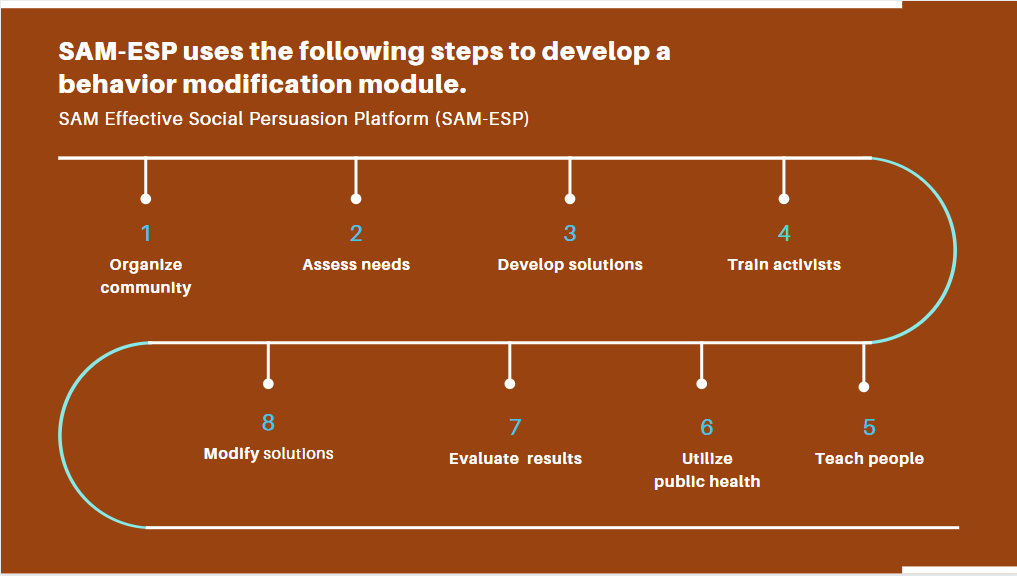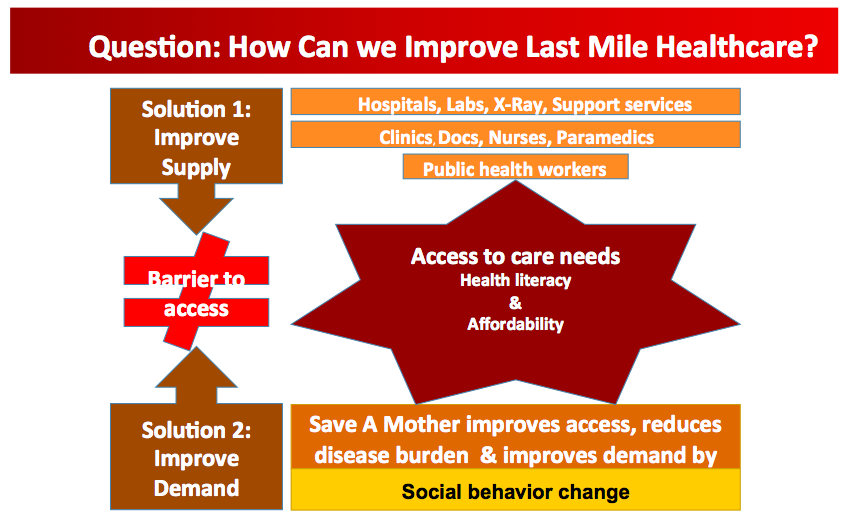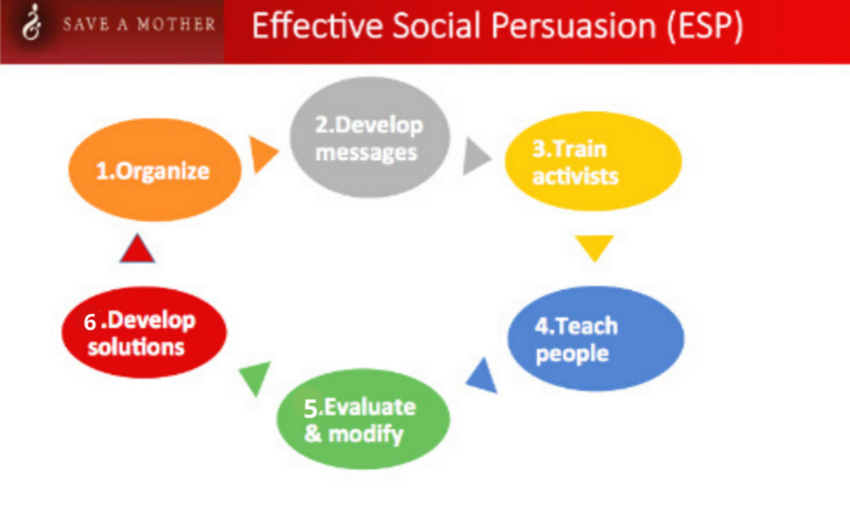How We Work!
Since 2008 Save a Mother (“SAM”) Foundation has developed an Effective Social Persuasion (SAM-ESP) model for health care support and behavior change for the poor in India. The SAM model has been proven in over 3200 villages & 2 urban slums in 10 districts representing approximately 6.2 million people in the states of Uttar Pradesh, Telangana and Karnataka. For less than 25 cents or 15 Rupees per capita per year, SAM has dramatically improved health outcomes in underserved rural areas.
The successful ESP method used to curb maternal mortality has been utilized for other healthcare issues such as tuberculosis detection and population stabilization.By partnering with local health organizations and governmental authorities, SAM ensures the sustainability of its solutions. SAM implements its programs at a low cost – approximately 15 Rupees per village per year.
Based on our work since 2008
What is Effective Social Persuasion Platform (SAM-ESP)?
Effective Social Persuasion Platform (SAM-ESP) is a tool to decrease disease burden. This low cost platform persuades a community to modify its health seeking behavior.
SAM-ESP is based on four assumptions:
Social behavior modification is the least expensive way to reduce disease burden.
A sustained campaign can persuade a community to modify health seeking behavior.
Health is an individual and community responsibility; ownership of this responsibility empowers a community to demand healthcare rights.
Behavior modification yields positive health as a reward and absence of behavior change causes sickness.





Save a Mother has developed the Effective Social Persuasion Platform (SAM-ESP) to achieve its goals.
SAM-ESP uses seven steps to develop social behavior change communication to significantly reduce disease burden.
Step One: Organize the Structure and Build Capacity
Each district constitutes a unit for dissemination of health literacy. Program manager, trainers and supervisors are selected from the local population. They receive intensive training on health issues, motivational techniques and leadership for SAM-ESP. The organization is lean on the top and heavy at the bottom; there are more volunteers than supervisors.
Step Two: Develop Messages for Health Literacy
SAM uses local community talent to create flip charts, slogans, songs and stories. A good message is simple and focuses on only one issue; it is short for easy recall; it has clarity for easy comprehension; it is structured as story, song or a slogan and evokes emotions about an unmet need. The community is encouraged to own the message by participating in developing the message.
Step Three: Train Health Activists
Master trainers impart health education to volunteer health activists over a three day period on one health topic. Each topic of health care has a separate training module. Examples are: child and maternal health, TB eradication, population stabilization. Repeat refresher training for half to one day is given once a month. Volunteer health activists are encouraged to own responsibility for the village health.
Step Four: Teach People
SAM organizes a village into an interactive healthcare community. Master trainers and health activists meet with the villagers every week to discuss health issues and best practices to promote health and prevent disease. Health behavior modification messages are delivered repeatedly at these meetings. Repetitive SAM-ESP, education campaigns and training of health volunteers are essential elements of the program. Between 2008 and 2011, SAM held multiple training sessions for the volunteers, who in turn held weekly SAM-ESP discussion groups at the village level. The following tables illustrate that the training sessions are repetitive and intense with no preset endpoint.
Step Five: Cooperate with Public Health Workers
Utilizing all available public health resources is the essential component of the program. Public health workers are invited to all meetings to establish linkages with the local public health system. The linkages create awareness, which leads to increased demand and encourages accountability of the health system.
Step Six: Evaluate and Improve
All programs are monitored and course correction applied based on the learning from the field. Modifications to training are done by participatory research action and community involvement
Step Seven: Develop Solutions and Replicate
The field experience helps SAM to innovate modular solutions for the health care of the rural poor. SAM develops these solutions in an innovation zone of approximately 6.2 million people in about 3200 villages in UP. The solutions are further validated and modified in over 300 villages in three districts in northern Karnataka. The solutions are kept simple, sustainable and scalable. SAM, in partnership with other institutions, replicates the solution in other districts.
Contact us
-
Save a Mother Foundation™
No.29-30, 14th Floor
Tower – 2, Prestige Meridian
M G Road,
Bangalore – 560001 -
91-080-41123727
-

